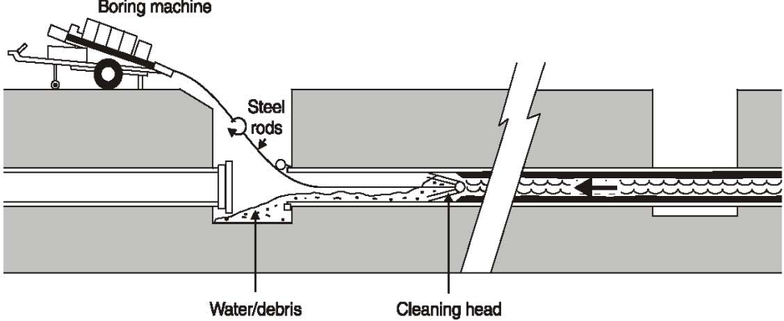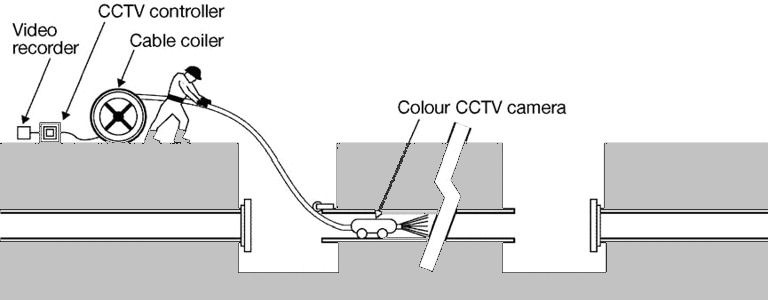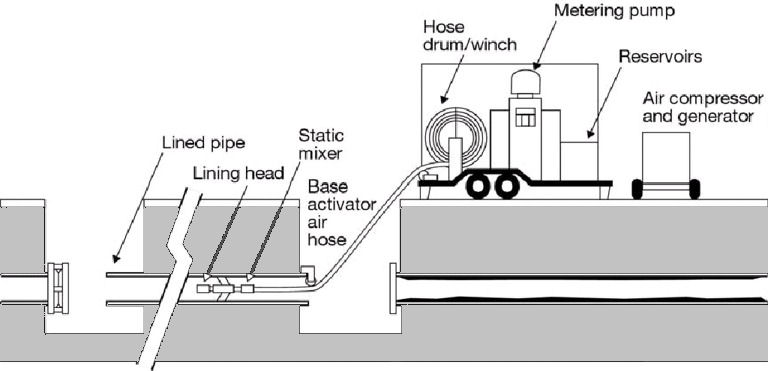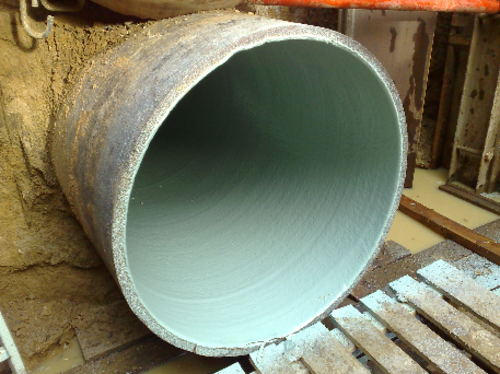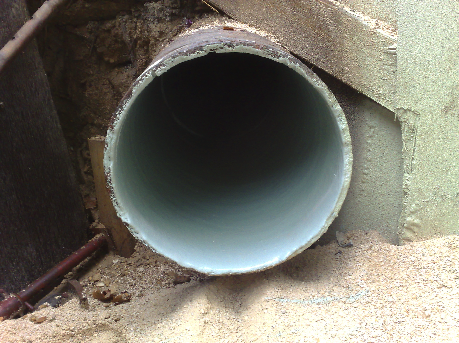617-986-4600
Process 1: Cleaning
A number of cleaning techniques are suitable for the removal of debris and encrustation so as to prepare the main pipe line for lining.
These include:
• Power Boring (diameter range 3” to 10” – illustrated below);
• Drag Scraping (diameter range 3” to 40”);
• Abrasive Pigging (diameter range 3” to 12”);
• Pressure Scraping (diameter ≥ 12”);
• Pressure Jetting (all diameters).
Plunging can be used to remove residual corrosion debris and water from the pipe.
Process 2: Preparation of Cleaned Pipes
Prior to spray application of the resin material, the main shall be free from standing water. This is achieved by foam swabbing (using oversized clean Swabs) and applies to all Pipe diameters of 3” and above. Swabbing is also used to remove residual corrosion debris and standing water from the pipeline.
Process of Operation for SIPP (Sprayed In Place Pipe)
Horizontal Pipe Lining
Process Stage 3: Pipe Inspection and Evaluation
Inspection of the pipes condition is evaluated using a CCTV pipe monitoring system and the inspection data is stored for client purposes.
Standard practice would be to evaluate before and after the cleaning process and if further cleaning is needed then it can be detected. We also inspect the pipe after lining for coating verification and post-lining CCTV video provided to client.
Process 4: Lining Rig
The lining rig consists of separate storage containers for the components of the resin material, a heating system to correctly condition the resin components, a pumping system to supply the resin materials to the hoses and maintain the mix-ratio, a monitoring system, and a winch/drum upon which are mounted the hoses that convey the components to the application head. The lining rig incorporates a heating system to control the temperature and the pumps re-circulate the resin components from the reservoirs through the lining hoses prior to lining. The flow rate of the pump and the winch speed determine the coating thickness and the lining rig is designed to give control over these parameters. Whilst the spin cast head is winched up the pipe it sprays a coating of mixed ratio resin to the internal walls of the pipe at a pre determined lining thickness which is programmed into the computer monitoring software prior to lining.
Resin Materials
The resin materials used for in situ spray-applied resin lining of pipe mains are moisture tolerant, solvent free systems. The base and activator components are manufactured in two clearly distinguishable colours which, when correctly mixed, provide a third distinctive colour, thereby allowing for a visual evaluation of mix efficiency to be conducted.
Ø 800 mm 2.5 mm Application:
This images shows a typical lining of a 32’’ water main having been cleaned swabbed and spray lined at 0.0984’’ thickness.
Ø 500 mm 5 mm Application:
This images shows a typical lining of a 20’’ water main having been cleaned swabbed and spray lined at 0.1968’’ thickness
Solutions
© 2024 SilverLining, All Rights Reserved.
